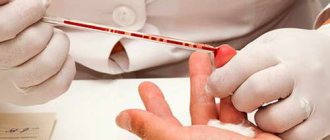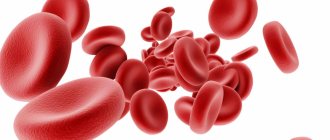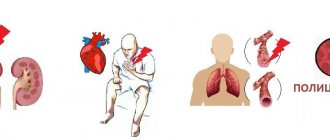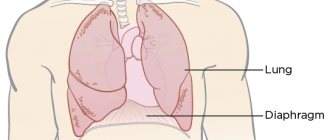What is urea
Urea is a product that is formed in the liver as a result of the synthesis of ammonia and carbon dioxide. The resulting compound is delivered by blood to the kidneys, where the filtering organ separates it from the general bloodstream and sends it into the urine.
Urea is a product unnecessary by the body, which must be completely eliminated, since its accumulation gives an osmotic effect, which can cause swelling of the internal organs in which it accumulates:
- liver;
- kidney;
- thyroid gland;
- spleen;
- pancreas.
Normally, the final product - urea - should be excreted from the body, but if there are any abnormalities in the functioning of the system, it is detected in the blood.
Why is urea produced?
Increased production of urea is associated with the presence of rich protein foods in the daily diet, but under the condition of impaired renal function.
Production occurs in several stages:
- Eating protein foods.
- Breakdown and further absorption of proteins and other nutrients by active enzymes and gastric juice.
- The final stage of protein breakdown in the liver, the transformation of nitrogenous elements into urea.
- Transfer of urea into the bloodstream, further filtration in the renal structures.
- Removal of the resulting biochemical substance with urine.
Stages of formation and excretion of urea
Normally, urea contains about 46% nitrogen. With prolonged abstinence from protein foods, a low urea content is observed, both in the blood serum and in urine.
What does urea in the blood mean?
Based on the state of the blood, namely the presence of high concentrations of urea in it, one can judge:
- the functioning of the kidneys, which are required to remove waste substances;
- about the function of the liver, which synthesizes urea from ammonia;
- about the health of muscle tissue, since the breakdown of protein in the muscles also produces urea.
Indications for testing may include:
- cardiac ischemia;
- rheumatoid arthritis;
- systemic scleroderma;
- liver diseases;
- screening results that do not fit within the normal range;
- suspected kidney infections;
- preparation for drug therapy;
- studies before hospitalization;
- assessment of the dialysis procedure performed.
Most often, an increase in urea indicates chronic or acute kidney disease. Separately, a comparative analysis is carried out for the urea content in urine and blood. If the level of the substance in the urine is lower than what is found in the blood, they speak of a disease of the filtration system - renal failure.
Is it possible to reduce urea with folk remedies?
The preparation and use of decoctions, tinctures or teas from medicinal herbs cannot be the main method of lowering urea levels in the blood. First of all, it is necessary to treat the underlying disease and restore normal functions of the liver, kidneys, and gastrointestinal tract.
Self-administration of folk remedies can aggravate the patient's condition or contribute to the development of uremia, followed by the onset of toxic coma.
The use of folk remedies is permissible only after approval by the attending physician. In some cases, experts even recommend using herbal decoctions or infusions as part of complex therapy:
- Licorice root decoction. Add 2 tablespoons of plant material to 1 liter of water and boil for 2-3 minutes. Next, the broth is cooled. Take 1/2 cup twice a day before meals.
- Bearberry infusion. 2 tablespoons of raw material are poured into 0.5 liters of boiling water and left for 4-5 hours. The infusion is taken 1 tablespoon before meals, three times a day.
- A decoction of horsetail and hernia. A tablespoon of the herbal mixture is poured into 500 ml of water, boiled over low heat for 7 minutes, and cooled. The finished decoction is taken before each meal, 1/2 cup.
- Rosehip tea stimulates urination, but may be contraindicated in some kidney disorders. You can prepare the raw materials yourself or purchase a ready-made mixture at the pharmacy.
- Infusion of black currant leaves. To prepare, you need to take young blackcurrant leaves and dry them naturally in the sun for several days. For infusion, you will need 7-9 large leaves, pour 1 liter of water, and leave for about 5 days. Take the finished product 250 ml twice a day. The course of treatment is 2-3 weeks.
On the subject: How to remove uric acid using folk remedies?
Why might urea be elevated?
To determine the level of urea in the blood, a laboratory method called a biochemical blood test is used. It involves taking material from a vein. For each age category of patients there is its own norm for urea content in the blood:
- in newborns from 1.7 to 5;
- in children of the first year of life from 1.4 to 5.4;
- from one to 15 years old can have 1.8-6.7;
- women over 18 years old - from 2 to 6.7;
- men over 18 years old - from 2.8 to 8.
Several factors influence the urea content. One of which is the level of amino acids in the body, since ammonia is formed from them during metabolism, which becomes one of the components of urea. On the other hand, with a sufficient amount of amino acids, the diseased liver will not be able to synthesize urea, which will be the reason for the detection of its negligible amount. The third important factor is the performance of the kidneys, which must, by filtering the blood, extract urea from it and send it out of the body with urine.
If we exclude all possible pathologies, then we can say that the following factors not related to the disease can increase the level of urea in the blood:
- on the eve of the collection of material, severe emotional stress was experienced;
- the patient had to buy and take a drug from the list: Tetracycline, Euthyrox, Neomycin, Lasix, any drug from the group of corticosteroids or sulfonamides, anabolic steroids, steroids, salicylates;
- the patient fasted for a long time or, on the contrary, ate a lot of protein foods;
- the patient on the eve of the delivery of the material or daily subjected the body to heavy physical activity.
When a doctor tries to determine the quality of kidney function, the presence of urea in the blood may indicate:
- blockage of the urinary ducts;
- chronic. renal failure;
- glomerulonephritis;
- pyelonephritis;
- dehydration, which could be preceded by myocardial infarction, shock or heart failure.
Separately, we should highlight the reasons why urea is formed in the human body in huge quantities:
- prostate neoplasms;
- burn disease;
- severe intestinal infections;
- hematological diseases;
- state of shock.
To accurately determine the patient’s condition, it is necessary to conduct several laboratory tests in a row to see the picture in dynamics; in addition, it is necessary to measure the amount of urea in the urine in order to be able to compare this indicator with blood data.
Urea in serum
Urea is the main breakdown product of proteins. It is the chemical form in which nitrogen that the body does not need is removed through urine.
The accumulation of urea and other nitrogen-containing compounds in the blood due to renal failure leads to uremia.
Synonyms Russian
Carbonic acid diamide, urea, urea in the blood.
English synonyms
Urea nitrogen, Urea, Blood Urea Nitrogen (BUN), Urea, Plasma Urea.
Research method
UV kinetic test.
Units
mmol/l (millimoles per liter).
What biomaterial can be used for research?
Venous, capillary blood.
How to properly prepare for research?
- Do not eat for 12 hours before the test.
- Avoid physical and emotional stress and do not smoke 30 minutes before donating blood.
General information about the study
Urea is one of the end products of protein metabolism, containing nitrogen. It is produced in the liver, transported by the blood to the kidneys, where it is filtered through the glomerulus and then excreted. The urea test result is an indicator of glomerular production and urine excretion.
Metabolized nitrogen is found in the body in the form of ammonia, produced from the remains of protein breakdown and processing. Ammonia in the liver combines with carbon dioxide to form urea. Rapid protein breakdown and kidney damage rapidly raise blood urea levels (as does virtually any massive cell death).
The amount of urea secreted is directly dependent on the level of protein consumed by a person; it increases during feverish conditions, with complications of diabetes and with increased hormonal function of the adrenal glands. Elevated urea levels are a marker of decreased glomerular filtration.
Urea is one of the main metabolites in the blood; the body does not use it in any way, but only gets rid of it. Since this excretion process is continuous, a certain amount of urea is always in the blood.
The level of urea should be interpreted inseparably from creatinine values. The term "uremia" is used when the concentration of urea in the blood rises above 20 mmol/l.
Azotemia, also indicated by an increase in urea concentration, is most often a consequence of inadequate excretion due to kidney disease.
Blood urea levels decrease in many liver diseases. This occurs due to the inability of damaged liver cells to synthesize urea, which in turn leads to increased ammonia concentrations in the blood and the development of hepatic encephalopathy.
Renal failure occurs when the glomerulus loses its ability to filter blood metabolites through itself. This can occur suddenly (acute renal failure) in response to illness, administration of drugs, poisons, or injury. Sometimes this is a consequence of chronic kidney diseases (pyelonephritis, glomerulonephritis, amyloidosis, kidney tumors, etc.) and other organs (diabetes, hypertension, etc.).
A urea test is usually ordered in combination with a creatinine test.
What is the research used for?
- To assess kidney function in a range of conditions (in conjunction with a creatinine test).
- For the diagnosis of kidney disease and for checking the condition of patients with chronic or acute renal failure.
When is the study scheduled?
- Urea is checked during a biochemical study: for nonspecific complaints,
- when assessing renal function before prescribing drug therapy,
- before hospitalization of a patient due to an acute illness,
- when a person is in a hospital.
- weakness, fatigue, decreased attention, poor appetite, sleep problems,
- to check the condition of patients with chronic kidney disease or non-renal chronic diseases such as diabetes, congestive heart failure, myocardial infarction, arterial hypertension, etc.,
What do the results mean?
Reference values
| Age, gender | Reference values | |
| 1.8 - 6 mmol/l | ||
| 4 – 14 years | 2.5 - 6 mmol/l | |
| 14-20 years | 2.9 - 7.5 mmol/l | |
| 20 – 50 years | male | 3.2 - 7.3 mmol/l |
| female | 2.6 - 6.7 mmol/l | |
| >50 years | male | 3 - 9.2 mmol/l |
| female | 3.5 - 7.2 mmol/l | |
Reasons for increased urea levels:
- decreased renal function caused by congestive heart failure, loss of salts and fluids, shock in combination with excessive protein catabolism (gastrointestinal bleeding, acute myocardial infarction, stress, burns),
- chronic kidney disease (pyelonephritis, glomerulonephritis, amyloidosis, renal tuberculosis, etc.),
- obstruction of the urinary tract (bladder tumor, prostate adenoma, urolithiasis, etc.),
- bleeding from the upper gastrointestinal tract (peptic ulcer of the stomach, duodenum, cancer of the stomach, duodenum, etc.),
- diabetes mellitus with ketoacidosis,
- increased protein catabolism in cancer,
- taking corticosteroids, nephrotoxic drugs, tetracyclines, excess thyroxine,
- use of anabolic steroids,
- food high in protein (meat, fish, eggs, cheese, cottage cheese).
Reasons for low urea levels:
- liver failure, some liver diseases: hepatitis, cirrhosis, acute hepatodystrophy, liver tumors, hepatic coma, poisoning with hepatotoxic poisons, drug overdose (this disrupts urea synthesis),
- acromegaly (a hormonal disease characterized by increased production of somatotropic hormone),
- fasting, low protein diet,
- impaired intestinal absorption (malabsorption), for example, with celiac disease,
- nephrotic syndrome (increased protein excretion in the urine, hyperlipidemia, decreased protein levels in the blood),
- increased production of antidiuretic hormone (ADH) and, as a consequence, pathological hypervolemia,
- pregnancy (increased protein synthesis and increased renal filtration cause a decrease in the amount of urea in pregnant women).
What can influence the result?
- Normally, children and women have slightly lower urea levels due to lower muscle mass than men.
- A decrease in the level of this indicator occurs during pregnancy due to an increase in blood volume.
- In older people, urea levels are elevated due to the inability of the kidneys to adequately maintain urine density.
- A large number of medications taken also affects urea levels (cephalosporins, cisplatin, aspirin, tetracyclines, thiazide diuretics especially increase it).
- Falsely elevated results from this test may be due to hemolysis of the blood samples sent for testing.
- The concentration of urea is sometimes influenced by the amount of protein a person consumes.
- In young children, due to increased protein synthesis, urea levels are slightly reduced.
Also recommended
- Urinalysis according to Nechiporenko
- General urine analysis with sediment microscopy
- Rehberg test (endogenous creatinine clearance)
- Serum uric acid
- Uric acid in daily urine
- Albumin in urine (microalbuminuria)
- Urea in serum
- Urea in urine
- Creatinine in daily urine
- Serum creatinine
- Potassium, sodium, chlorine in daily urine
- Serum potassium
- Serum sodium
- Chlorine in serum
- Phosphorus in daily urine
- Serum phosphorus
- Serum calcium
- Calcium in daily urine
- Ionized calcium
Who orders the study?
Therapist, urologist, nephrologist, infectious disease specialist, endocrinologist, gastroenterologist, gynecologist, cardiologist.
Symptoms indicating increased urea
Based on his feelings, the patient himself can often tell that the level of urea in the blood may be elevated. This is primarily indicated by pain in the lower back in both men and women. It indicates kidney disease.
Separately distinguished:
- swelling;
- increased amount of urine produced;
- scanty urine production;
- the presence of protein in the urine.
However, indications for donating blood for urea may be:
- ischemic diseases;
- hepatitis;
- cirrhosis;
- decreased absorption of foods;
- connective tissue diseases.
The level of urea indicates several possible pathologies at once, so this analysis is often used to monitor the patient’s condition.
Medicines that lower urea levels
If urea in the blood is elevated, an integrated approach is necessary to normalize its levels. Combined treatment includes prescribing certain medications and performing artificial blood purification in order to remove toxic breakdown products.
The following medications are most often prescribed to reduce urea levels:
- Polysorb is a drug from the group of enterosorbents for oral administration in the form of a suspension. One tablespoon of the product is dissolved in a glass of clean water without gas. The prepared solution is taken 3-4 times a day an hour before meals. The course of treatment is from 10 to 15 days. The cost of the drug is approximately 240 rubles.
- Atoxil is a sorbent with intense absorption properties that has antibacterial, disinfectant and wound-healing effects. The drug is able to remove toxic substances from the body and eliminate the symptoms of poisoning. To prepare the solution, thoroughly stir 1-2 sachets of the product in 200 ml of slightly warmed water. Take Atoxil as symptoms develop. The price of the sorbent is about 150 rubles.
- Enterosgel is an absorbent drug in the form of a jelly-like paste. The drug is taken 1 tablespoon 3 times a day 1.5 - 2 hours before or after meals. The course of therapy is designed for 7 - 14 days. The price of the drug is about 230 rubles.
- Silix is a multi-purpose intestinal sorbent in powder form. To prepare the solution, you need to dissolve 12 grams of the product in a glass of warm boiled water. The resulting volume is calculated for a day. It is divided into several stages. The drug is taken for 14 days. The cost is about 190 rubles.
- Lespenefril is an antiazotemic, diuretic agent in the form of an oral solution. The drug activates filtration, reduces urea levels and removes nitrogenous compounds. A single dose is 1-2 teaspoons dissolved in? glasses of water. The treatment course is 3 - 4 weeks. The cost of the drug is about 195 rubles.
- Hepa-Merz is a drug to reduce the concentration of ammonia in the blood. The active substance promotes the production of somatotropin, its own insulin. Has a beneficial effect on liver function. The drug is administered by intravenous drip infusion. To prepare a medicinal cocktail, 40-60 ml of Hepa-Merz are injected into 500 ml of sodium chloride solution. The price of one ampoule of the product is about 630 rubles.
- Ornilatex belongs to the hypoazotemic group of pharmaceuticals. The product promotes the removal of excess urea and the synthesis of its own hormones. The required amount of the drug is injected into 500 ml of saline sodium chloride solution or Ringer's solution and administered intravenously. The price for 10 ampoules of Ornilatex starts from 1,470 rubles.
- Ornitsetil is a detoxifying agent that helps reduce urea levels in the blood and restore liver function. Available in powder form for the preparation of a solution for oral administration. The drug is taken 2-3 times a day, after dissolving the contents of the sachet in 200 ml of water. The daily dosage usually does not exceed 20 grams per day. The price starts from 500 rubles for 10 bags.
- Larnamine is a drug of the hypoammonemic group. It is able to reduce urea levels in the blood, restore the structure of liver tissue, and improve protein metabolism in the body. Can be used orally or by intravenous infusion. For oral solution, mix the contents of the sachet in one glass of water or juice. Take 3 times a day during meals. For intravenous drip infusions, the contents of ampoules (from 4 to 8 pieces) are introduced into a bottle of physiological sodium chloride solution (500 ml). The price of the drug in powder form is from 2,400 rubles per package, in ampoules - from 1,800 rubles for 10 pieces.
Under the influence of medications, the concentration of urea in the body decreases and the breakdown products of nitrogen-containing compounds are eliminated. Medicines are prescribed by the attending physician based on laboratory data, after a detailed analysis of the results of ultrasound diagnostics.
How to take a urea test correctly
You need to prepare for the analysis so as not to receive distorted data. First of all, you need to remember that blood is donated strictly on an empty stomach. In addition, since urea production is affected by the breakdown of muscle fibers, it is important to avoid physical activity on the eve of the test. If you can’t get to the laboratory without excessive physical activity, you need to arrive at the door of the office no later than half an hour before the appointed time in order to have time to calm down and put your nervous system in order.
If the patient is taking any medications, it is better to postpone the morning dose until the blood has already been donated. Immediately before the donation, you should not do massages, biopsies, or x-rays, especially those using contrast.










